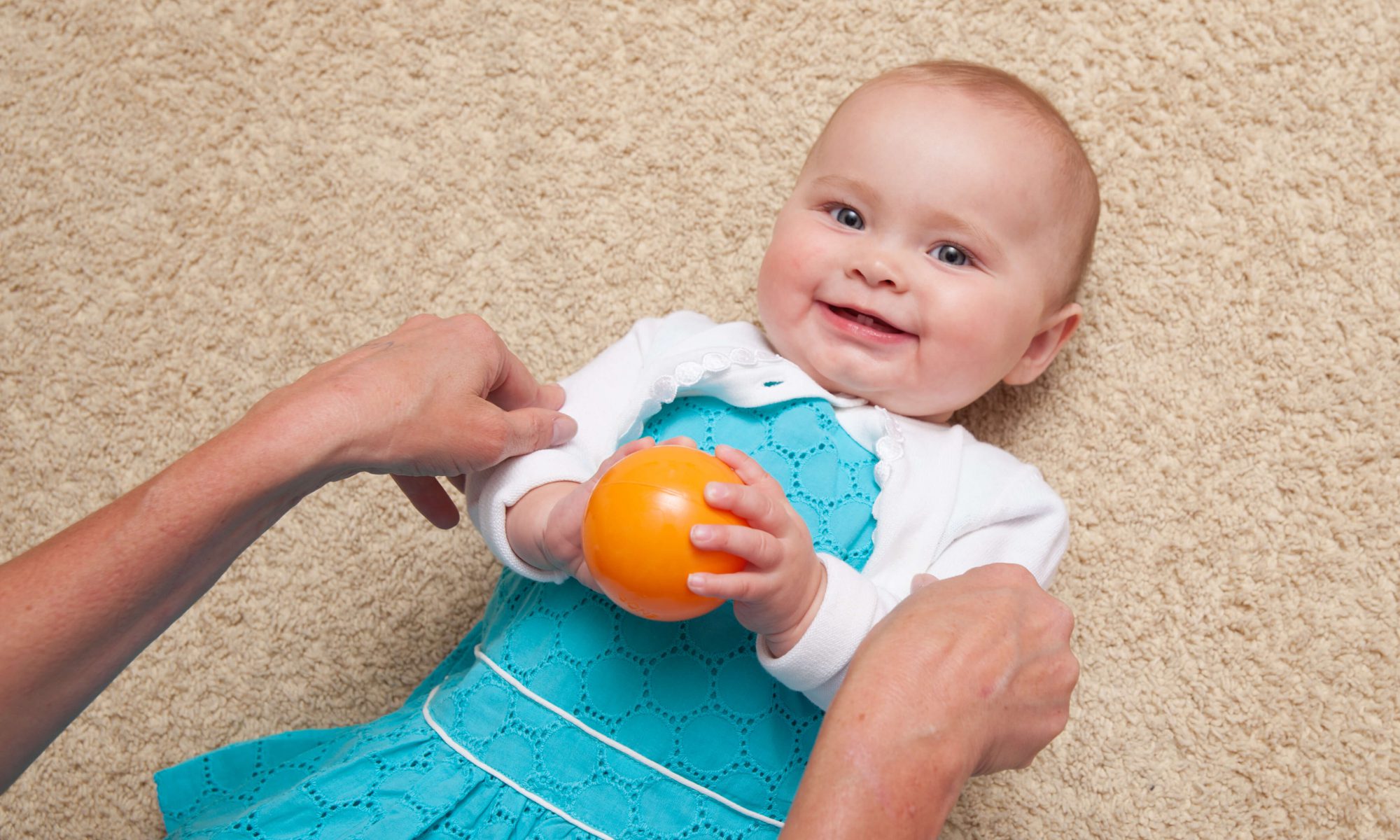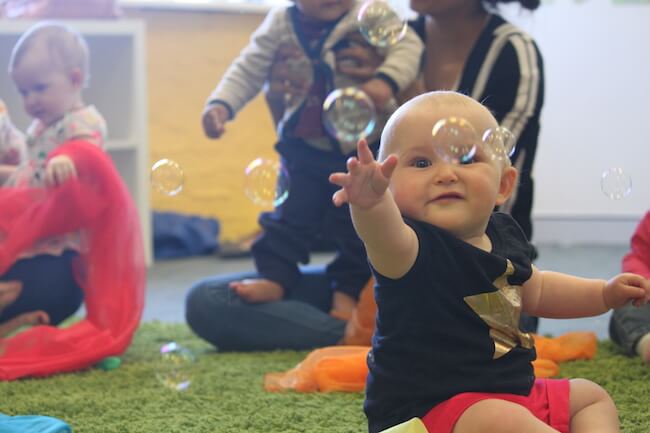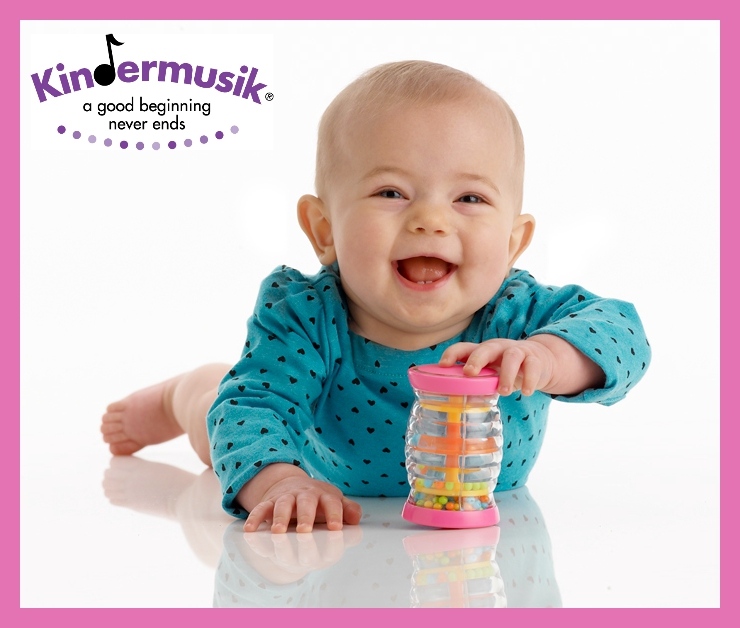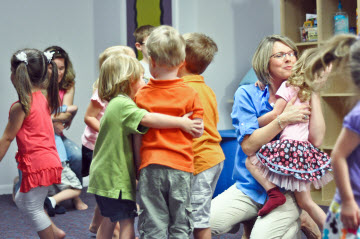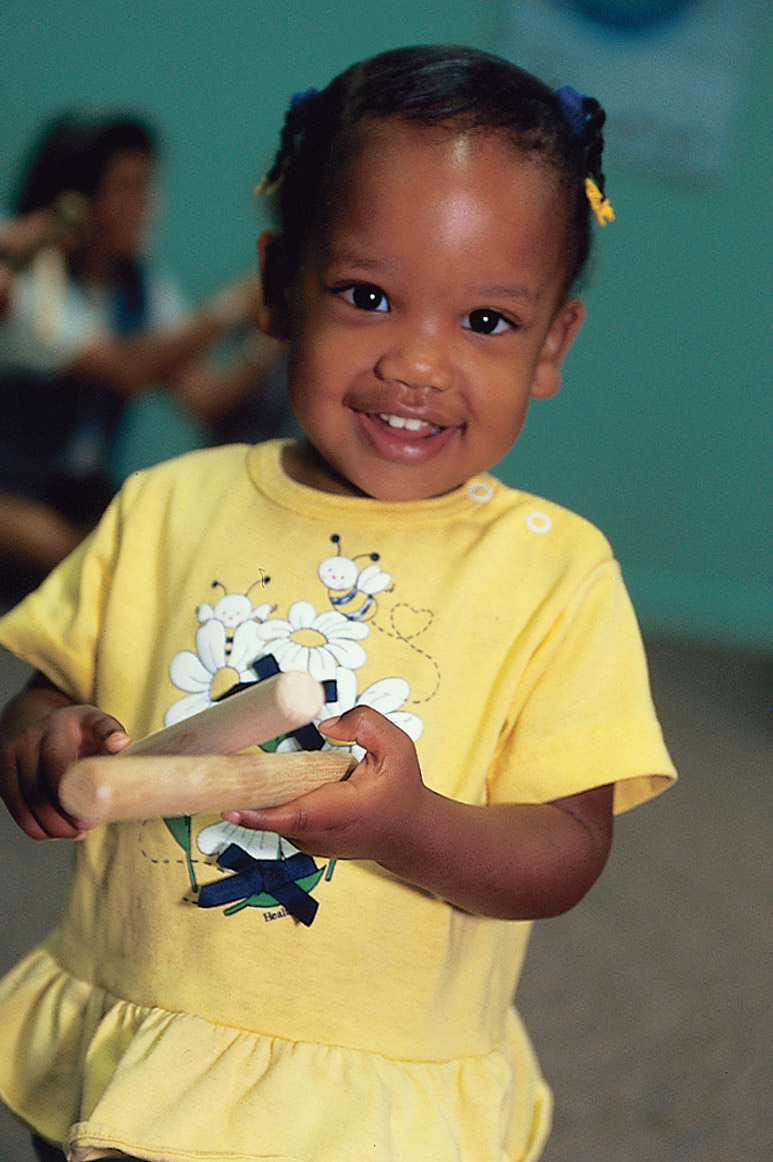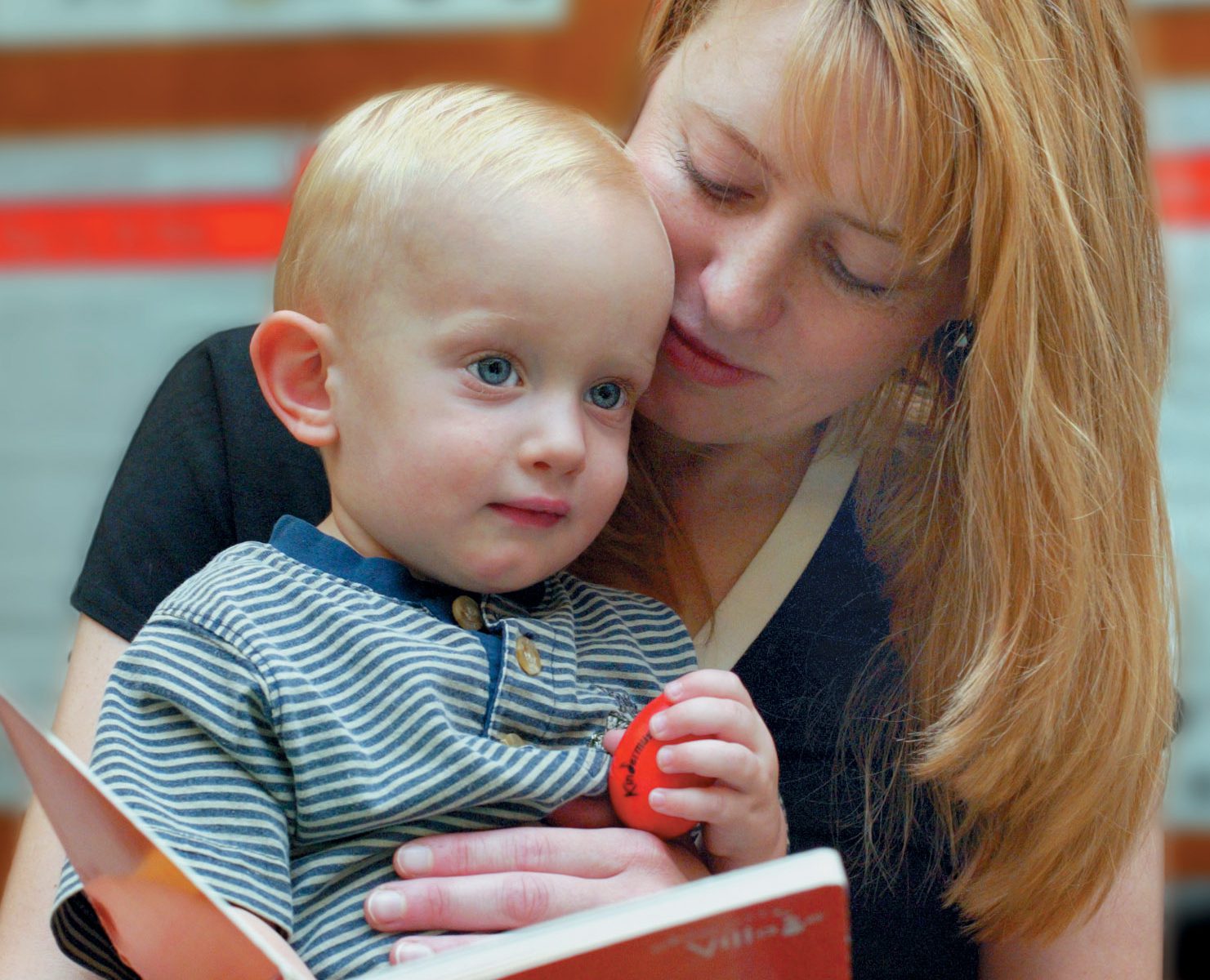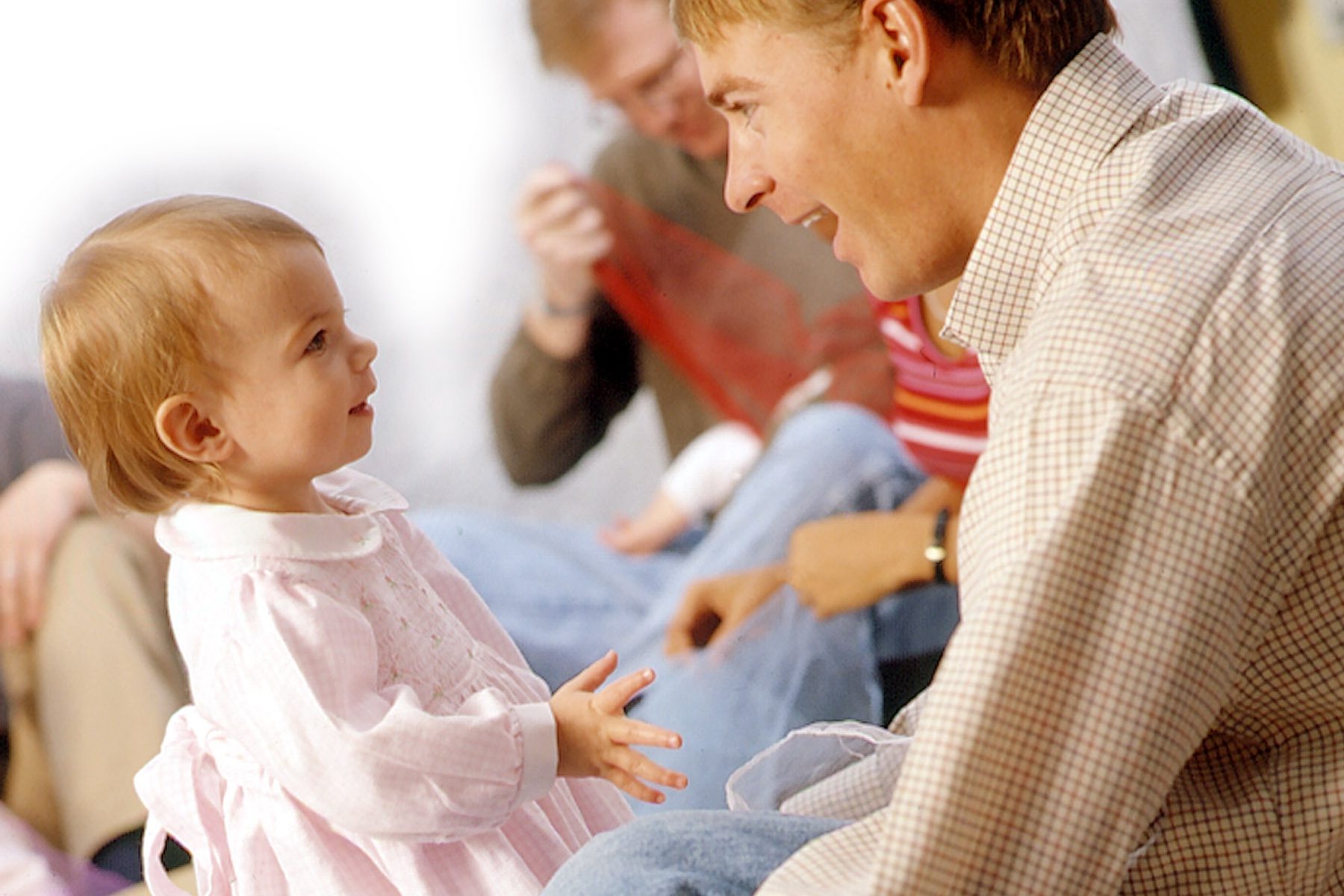Yes, “baby speech development” really is critical in that first year. According to the Proceedings of the National Academy of Sciences, researchers found evidence that babies—long known to explore their world with their mouths—actually use their tongues, lips, and other articulators to unravel the mysteries of the speech and language they hear on a constant basis. Let’s start with articulators… Continue reading “Baby Speech Development? They Learn with their Mouths…”
Kids Need to be Kids
[vc_row][vc_column][vc_column_text]Author and early childhood education expert Nancy Carlsson-Paige makes the case for authentic educational experiences, less concerned with assessment and more concerned with experiences that give kids what they need – opportunities to be kids.
[/vc_column_text][/vc_column][/vc_row][vc_row][vc_column][vc_column_text]
Dr. Nancy Carlsson-Paige knows a thing or two about childhood development. For 30 years, she trained teachers at Lesley University and is critical of educational models that focus on standardized tests. Dr. Carlsson-Paige’s focus can be found right in the subtitle of her book: A Proven Roadmap for Raising Confident, Creative, Compassionate Kids. But how do we do this? In her acceptance speech upon receiving the Deborah Meier Award by the nonprofit National Center for Fair and Open Testing, she said the following, published in the Washington Post:
I have loved my life’s work – teaching teachers about how young children think, how they learn, how they develop socially, emotionally, morally. I’ve been fascinated with the theories and science of my field and seeing it expressed in the actions and the play of children.
So never in my wildest dreams could I have foreseen the situation we find ourselves in today.
Where education policies that do not reflect what we know about how young children learn could be mandated and followed. We have decades of research in child development and neuroscience that tell us that young children learn actively — they have to move, use their senses, get their hands on things, interact with other kids and teachers, create, invent. But in this twisted time, young children starting public pre-K at the age of 4 are expected to learn through “rigorous instruction.”
And never in my wildest dreams could I have imagined that we would have to defend children’s right to play.
Play is the primary engine of human growth; it’s universal – as much as walking and talking. Play is the way children build ideas and how they make sense of their experience and feel safe. Just look at all the math concepts at work in the intricate buildings of kindergartners. Or watch a 4-year-old put on a cape and pretend to be a superhero after witnessing some scary event.
But play is disappearing from classrooms. Even though we know play is learning for young kids, we are seeing it shoved aside to make room for academic instruction and “rigor.”
– Dr. Nancy Carlsson-Paige
[/vc_column_text][/vc_column][/vc_row][vc_row][vc_column][vc_column_text]
Play: Let Kids Be Kids
Dr. Carlsson-Paige reminds us that some of the most important competencies can’t be tested.[/vc_column_text][blockquote cite=”Dr. Nancy Carlsson-Paige”]”Self-regulation, problem solving ability, social and emotional competence, imagination, initiative, curiosity, original thinking — these capacities make or break success in school and life and they can’t be reduced to numbers.”[/blockquote][vc_column_text]Letting kids be kids, letting them experience the world through interaction with peers in a safe environment, supervised by caring, trained educators is incredibly beneficial as children develop. Where can we find these opportunities? Often, in many districts, even at the kindergarten level, the school day is rigidly structured, with little time for creative play, and that, as Dr. Carlsson-Paige points out, is one of the three things young children need:
Time and Space for Creative Play
Feeling of Security
Strong Meaningful Relationships with Adults and other Children
[/vc_column_text][/vc_column][/vc_row][vc_row][vc_column][vc_column_text]
Love Above All
This is key. I know – it sounds like a line, but love is empathy and caring in action. Kids learn how to interact with others by actually interacting with others. And in those interactions, especially starting from age two, they begin to understand empathy and caring. Social and emotional coaching from trusted adults guides kids through this development. When you see one child sharing with another…when you see one child helping another up after he tripped, you are seeing love in action.
If young children don’t receive these experiences that positively shape their developmental progress in school, where can they find them? Where can they experience all three of Dr. Carlsson-Paige’s legs that support the table of childhood? Kindermusik fits the bill. Here are 10 benefits of enrolling:
Benefit #1: Kindermusik gives your child that unique head start you’ve been looking for – musically, cognitively, and academically.
Benefit#2: Kindermusik inspires a love of music from an early age with songs, instruments, and activities that are just right for each age and every stage.
Benefit #3: Kindermusik enhances every area of your child’s development – we are so much more than just music!
Benefit #4: Kindermusik gives you the time and the tools to enjoy quality time with your child – in class and at home.
Benefit #5: Kindermusik Home Materials let you take the music, fun, and learning with you all week long, wherever you go.
Benefit #6: Kindermusik classes provide a happy social outlet for your child and a valuable support network for you.
Benefit #7: All Kindermusik activities are research-proven and giggle-approved, and all are supported by a developmental and musical focus.
Benefit #8: Kindermusik lays a strong foundation for future success in school and in formal music lessons later on.
Benefit #9: Kindermusik is something you and your child will use every day – at home or on the go!
Benefit #10: Kindermusik offers a comprehensive program with the potential for positively impacting your child from newborn all the way to 7 years of age.[/vc_column_text][/vc_column][/vc_row][vc_row][vc_column][vc_column_text]Check out Dr. Carlsson-Paige’s book. It is a research-based, compassionate approach to guiding the development of children, written by a veteran collegiate educator who is also the mother of two successful, artist sons.[/vc_column_text][/vc_column][/vc_row]
Baby Brains: Music and Speech
[vc_row][vc_column][vc_column_text]Music is full of patterns. It’s why educators and researchers have pointed out for a long time now that music helps kids with math. And now, thanks to technological advances that help us “see” inside the brain, we’re starting to understand more and more of how music shapes and impacts cognitive development, therefore significantly impacting other areas of development such as language acquisition.
In the earliest years, a child’s ongoing cognitive development and experiences are a big part of his or her language development. The cognitive aspects of learning to speak and communicate have a great deal to do with memory, focus, and understanding patterns.
This is where early childhood music classes come in. Recent research has found that music and movement classes literally changed how the brain processed “both music and new speech sounds.”[/vc_column_text][/vc_column][/vc_row][vc_row][vc_column][vc_column_text]
NEW RESEARCH
The findings of this study were incredibly exciting to those of us who are so passionate about providing early childhood music enrichment experiences through our weekly Kindermusik classes.
“Our study is the first in young babies to suggest that experiencing a rhythmic pattern in music can also improve the ability to detect and make predictions about rhythmic patterns in speech,” said lead author Christina Zhao, a post-doctoral researcher at University of Washington’s Institute for Learning & Brain Sciences.
“This means that early, engaging musical experiences can have a more global effect on cognitive skills.”
“In both the music and control groups, we gave babies experiences that were social, required their active involvement and included body movements – these are all characteristics that we know help people learn. The key difference between the play groups was whether the babies were moving to learn a musical rhythm.”
Music and movement classes like Kindermusik baby and toddler classes check all of these boxes and more – a rich social experience, delightfully engaging parent-child play and interaction, rhythmic experiences through instrument play and movement activities, an immersive language environment, and a beautiful, sequential curriculum. These curricula are thoughtfully and carefully designed, not only to be joyful and playful, but also meaningful and impactful on a child’s long term learning and development.
“This research reminds us that the effects of engaging in music go beyond music itself. Music experience has the potential to boost broader cognitive skills that enhance children’s abilities to detect, expect and react quickly to patterns in the world, which is highly relevant in today’s complex world.”[/vc_column_text][/vc_column][/vc_row][vc_row][vc_column][/vc_column][/vc_row][vc_row][vc_column][vc_column_text]Now more than ever, we’re proud to confidently assure parents that one of the very best learning experiences you can give your little one are the delightful and developmentally rich experiences you will both have in a weekly music and movement class like Kindermusik.
And we promise, you’ll get the extra bonus of being a part of putting that adorable smile on her little face and that sweet song in his little heart…to stay.[/vc_column_text][vc_separator][vc_column_text]Contributed by Theresa Case whose award-winning Kindermusik program at Piano Central Studios in upstate South Carolina has been making a difference for children and families for over 20 years now.[/vc_column_text][/vc_column][/vc_row]
How Music Helps Children Listen, Share, & Cooperate
 Happy. Well-adjusted. Confident. Shows empathy. Cooperates with peers. Has good self-control. Any parent would be delighted to hear this assessment of his or her child. These words describe the social-emotional skills that are so closely tied to success in school and success in life.
Happy. Well-adjusted. Confident. Shows empathy. Cooperates with peers. Has good self-control. Any parent would be delighted to hear this assessment of his or her child. These words describe the social-emotional skills that are so closely tied to success in school and success in life.
For young children, social-emotional development can be enhanced through age-appropriate group musical experiences, like those in the Kindermusik classroom.
From music skills to life skills…
Here are just a few examples of how music and movement classes improve children’s listening skills and support social-emotional development:
- Gathering time where the children informally explore instruments or play with special props gives lots of opportunity for practicing sharing… and resolving conflict when two children want the same instrument.
 Ensemble experiences help children to listen closely and work together as they play-along and sing-along together as a group.
Ensemble experiences help children to listen closely and work together as they play-along and sing-along together as a group.
- Waiting for a turn to explore a special instrument or to share an idea helps children learn self-control.
- Sitting on the Story Blanket during musical story time teaches children how to empathize (Where can Susie sit?), cooperate (Let’s make sure all of our friends can see.), and listen.
- “Stop and go” activities also give opportunities for children to practice inhibitory control in a fun way – including using the ASL sign for “Stop!”

- “Follow the leader” activities require children to listen and cooperate, take turns, and practice inhibitory control. You can practice this at home with an impromptu musical parade around the house as you take turns being the band leader.
- Circle dances require every one to move together in the same direction and at the same speed. But they also inspire a sense of community, belonging, and self-esteem.
- Listening to music, moving to music, and singing are ways children can communicate about their feelings, helping them begin to better self-regulate and providing them with a safe and creative outlet for self-expression.
Find out more about Kindermusik at www.Kindermusik.com.
Sometimes ACTIONS are louder than WORDS

Have you ever sat in a movie theater, and several people in the row behind you are all talking? I bet you found it difficult to concentrate on the movie.
What does this have to do with your child in a Kindermusik class? Just imagine this scenario: your Kindermusik teacher brings out a basket of rhythm sticks and sings “two for you and two for your grownup”. Most of the grownups in the room start encouraging their child to go get the sticks. They encourage them with their voices and now we hear 10 adults telling their child to go get sticks. At this point, some of the children will start to “tune you out”. I like to call this “selective hearing loss”. (I have teens at home and I am very familiar with this temporary, albeit sometimes annoying ailment.)
Although we highly encourage you to talk to your child throughout the day and label movements, sounds, and objects to help with language acquisition, there are times when we have to allow them to figure out what to do without being told. Allow them to problem solve.
I want to share with you an experiment we did in a few of my classes. I asked the adults not to give directions to their child during this class – just sing when it was appropriate in the lesson. The toughest part was the “no talking”. But they all agreed and were curious to witness their child in this somewhat altered environment. I encouraged them to guide their little one by being a model and using non-verbal cues.
Here is what some of the adults said at the end of class:
* They showed more patience
* They were more “in the moment” with their children
* Their children were more attentive and focused
* Their children felt freer to create, explore, and express themselves
Try a version of this experiment at home. Take time to explore with your child without giving them opinions or directions. Be a model for them through your actions and not your words. It’s not easy, but it may allow you to be “in the moment” with your child in a way you have not been before.
Special thanks to Kindermusik educator Cathy Huser for sharing this insightful post from her blog. Cathy’s program, Kindermusik of Cleveland, has been a top ten Kindermusik Maestro program for 10 years running.
What do you hear?
 Pitter, patter, pitter, patter… I can HEAR the rain.
Pitter, patter, pitter, patter… I can HEAR the rain.
Musically speaking, rain sounds are short sounds. The musical term “staccato” refers to sounds that are separated and often short. It’s the perfect word to use when playing with – and describing – rain sounds. But did you know that being able to identify a sound as “short” (staccato) or “long” (legato) actually involves some pretty high-level thinking and listening skills?
Active listening differs from simple hearing in that we must choose it as an intentional act. Analytical listening, like the kind we will do in Kindermusik class when we explore different shaker sounds and mimic and identify a variety of rain sounds, takes the development of our music listening skills to a whole new level.
Analytical listening is an absolutely vital skill, for music class and for life because it requires children to:
– Evaluate what is heard and comprehended
– Contemplate and reflect
– Weigh new information against what is already known
– Discuss by sharing thoughts, opinions, and viewpoints
As Kindermusik teachers, it is an awesome privilege for us to be able to help shape a child’s disposition and aptitude for learning music – practicing the skills that lead to competency and enjoyment and encouraging the attitude that music is fun. Music truly is a powerful tool for representing ideas and expressing individuality, especially when a child develops the ability to listen analytically.
In the Kindermusik classroom where so many of the senses are often engaged simultaneously and where imagination can soar, musical learning truly has the potential to be the strongest and most powerful.
Posted by Theresa Case, whose Kindermusik program at Piano Central Studios is proudly among the top 1% of programs worldwide.
Let’s jump for joy!
This article was originally written by Kindermusik educator Helen Peterson. Helen’s Kindermusik of the Valley program, located in and around the twin cities, MN, is one of the top programs in the world.
 In a relatively recent study, 4 to 6 year old children in music and movement programs were tested to see how they compared to children enrolled in a traditional physical education program. The results were interesting, to say the least. The children getting music and movement instruction showed more growth in motor skills than those in a standard physical education program. Here’s a quote from Early Childhood Research Quarterly (Vol. 19, Issue #4, 2004):
In a relatively recent study, 4 to 6 year old children in music and movement programs were tested to see how they compared to children enrolled in a traditional physical education program. The results were interesting, to say the least. The children getting music and movement instruction showed more growth in motor skills than those in a standard physical education program. Here’s a quote from Early Childhood Research Quarterly (Vol. 19, Issue #4, 2004):
“In a study 50 children were enrolled in a music and movement program, and 42 children were enrolled in a traditional physical education program. After 8 weeks, the children in the music AND movement group had improved significantly in both jumping and dynamic balance skills when compared to their peers in the traditional program.”
As a Kindermusik educator, I have had many parents ask me how Kindermusik compares to Gymboree or Little Gym, now I can honestly say (as I suspected): movement + music (Kindermusik) really is the best choice.
Good taste in books
 Literacy begins early, with nothing more than simply spending time with a book. Even if your baby puts the book in her mouth while you read, she absorbs the sounds of your words, the action of you turning the page, and the pleasure you derive from reading.
Literacy begins early, with nothing more than simply spending time with a book. Even if your baby puts the book in her mouth while you read, she absorbs the sounds of your words, the action of you turning the page, and the pleasure you derive from reading.
The first time your little one points to a picture in a book, she’s understanding the concept of symbols – the idea that the words and pictures represent objects and ideas. A child’s motivation to learn about and use symbols grows as she realizes that this is how she can make her needs and thoughts known to others.
When it comes to choosing books, recent research shows that children who have been exposed to nursery rhymes and lyrical stories in their younger years become better readers and are more successful in school.
Here are some of our favorite tips for developing good taste in books.
Your baby: Spend time with your baby and an open book. Point to the pictures and talk about what you see. Even if your child doesn’t understand a single word, she’ll absorb your love of books and reading.
Your toddler: Now your child can start adding sound effects when you read together. Choose stories with animals so your toddler can imitate their sounds and movements.
Your preschooler: Your little one is now ready to make up his own stories. He can also use a favorite story as the basis for his own pretend play. Help your preschooler make his own book using a favorite song or family photos. Share this “published” work with the whole family!
11 Ways to REALLY Listen to Your Child
The follow post was shared with Minds on Music from Kindermusik educator Vanessa Cabrera’s Language, Music & More blog.
A few days ago I read this: “We were given two ears but only one mouth, because listening is twice as hard and important as talking.”
Well, it’s true! It made me think about how much children have lot to say… a lot! Sometimes adults don’t think that children have anything important to say or that they can’t learn from children. So often times the adult does all the talking. They lecture, preach, or, worst of all, ignore the child. Listening to your children will help them grow up to be adults with increased self-esteem because you made them feel that what they have to say is important.
That said, children are not always sure how to communicate their feelings, so they might say something or act completely different from how they actually feel. Active listening can help you to help them figure it out! Here are some tips to REALLY listen to your child:
1. Stop what you are doing. Don’t be distracted doing something else.
2. Look at your child. Sit at his/her level.
3. Pay attention to your child’s nonverbal language. Does the child look happy, sad, afraid?
4. Be silent. It might be hard, but it is important that they have time to express themselves. It will also give you time to understand the situation before reacting.
5. Use simple acknowledgement responses that show you are listening. “I see.” “Oh.” “Uh-Huh.” or “Hmmm.”
6. Use “door-openers”: phrases that encourage further talking. “Tell me more.” “What else?” “Go on.” “How do you feel about that?” “Then what?”
7. Listen for and name the feelings you think you hear from what your child is telling you. “That made you pretty mad, didn’t it?” “You seem really happy about that!”
8. Use problem-solving phrases when needed. “What do you wish you could do?” “What do you want to happen?” “What do you think will happen if you do that?”
9. Don’t feel that you must advise or help your child come up with a solution all the time. The value of listening is in the listening itself.
10. Let them know you are available.
11. Don’t try to deny, discount, or distract the child from the feelings they are expressing.
Listening helps parents and children avoid the power struggle cycle. Instead of arguing or disagreeing, listen. Show your understanding while maintaining your position. Listening builds stronger relationships, shows respect, and helps the child explore his/her own feelings and thoughts on a deeper level. It builds their sense of empathy.
So, are you ready to listen to your child?
Special thanks to Kindermusik educator Vanessa Cabrera for sharing this post from her Language, Music & More blog. Information about Vanessa’s Maryland Kindermusik program can be found at her blog.
Einstein and his violin
This article was written by Kindermusik educator Helen Peterson. Helen’s Kindermusik of the Valley program, located in and around the twin cities, MN, is one of the top programs in the world. Enjoy this little vignette!
A few years ago, Tucker and I took a quick trip to W ashington D.C. and, like thousands of other tourists, I made him sit in Albert Einstein’s lap for a picture.
ashington D.C. and, like thousands of other tourists, I made him sit in Albert Einstein’s lap for a picture.
Albert Einstein’s schoolteachers told his parents that he was “stupid” and simply couldn’t learn. They urged his parents to take him out of school.
What did his parents do instead? They bought him a violin. It was a turning point.
In later years, Einstein would turn to his violin while trying to work out his scientific problems and formulae. Once, when asked about his theory of relativity, Einstein explained, “It occurred to me by intuition, and music was the driving force behind that intuition. My discovery was the result of musical perception.”

